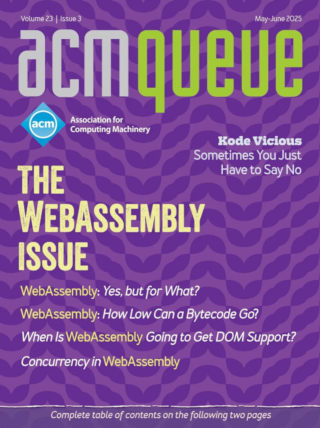
Hootsuite: In Pursuit of Reactive Systems:
A discussion with Edward Steel, Yanik Berube, Jonas Bonér, Ken Britton, and Terry Coatta
It has become apparent how critical frameworks and standards are for development teams when using microservices. People often mistake the flexibility microservices provide with a requirement to use different technologies for each service. Like all development teams, we still need to keep the number of technologies we use to a minimum so we can easily train new people, maintain our code, support moves between teams, and the like.
IoT: The Internet of Terror:
If it seems like the sky is falling, that’s because it is.
It is true that many security-focused engineers can sound like Chicken Little, running around announcing that the sky is falling, but, unless you’ve been living under a rock, you will notice that, indeed, the sky IS falling. Not a day goes by without a significant attack against networked systems making the news, and the Internet of Terror is leading the charge in taking distributed systems down the road to hell - a road that you wish to pave with your good intentions.
10 Ways to Be a Better Interviewer:
Plan ahead to make the interview a successful one.
Of course, there is no right way to do an interview, but you can always be better. Make an effort to make your candidates as comfortable as possible so they have the greatest chance for success.
Four Ways to Make CS & IT Curricula More Immersive:
Why the Bell Curve Hasn’t Transformed into a Hockey Stick
Our first experiences cement what becomes normal for us. Students should start off seeing a well-run system, dissect it, learn its parts, progressively dig down into the details. Don’t let them see what a badly run system looks like until they have experienced one that is well run. A badly run system should then disgust them.
Metaphors We Compute By:
Code is a story that explains how to solve a particular problem.
Programmers must be able to tell a story with their code, explaining how they solved a particular problem. Like writers, programmers must know their metaphors. Many metaphors will be able to explain a concept, but you must have enough skill to choose the right one that’s able to convey your ideas to future programmers who will read the code. Thus, you cannot use every metaphor you know. You must master the art of metaphor selection, of meaning amplification. You must know when to add and when to subtract. You will learn to revise and rewrite code as a writer does. Once there’s nothing else to add or remove, you have finished your work. The problem you started with is now the solution. Is that the meaning you intended to convey in the first place?
Is There a Single Method for the Internet of Things?:
Essence can keep software development for the IoT from becoming unwieldy.
The Industrial Internet Consortium predicts the IoT (Internet of Things) will become the third technological revolution after the Industrial Revolution and the Internet Revolution. Its impact across all industries and businesses can hardly be imagined. Existing software (business, telecom, aerospace, defense, etc.) is expected to be modified or redesigned, and a huge amount of new software, solving new problems, will have to be developed. As a consequence, the software industry should welcome new and better methods.
Vigorous Public Debates in Academic Computer Science:
Expert-curated Guides to the Best of CS Research
This installment of Research for Practice features a special curated selection from John Regehr, who takes us on a tour of great debates in academic computer science research. In case you thought flame wars were reserved for Usenet mailing lists and Twitter, think again: the academic literature is full of dramatic, spectacular, and vigorous debates spanning file systems, operating system kernel design, and formal verification.



